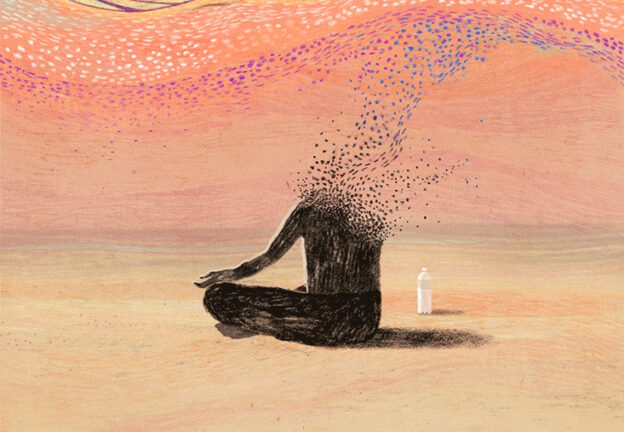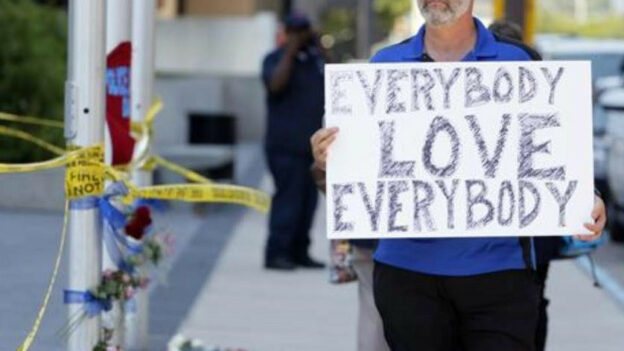
A piece I wrote for Religion News Service about a misunderstood element of Israeli politics can be read here.

A piece I wrote for Religion News Service about a misunderstood element of Israeli politics can be read here.
We shouldn’t aim to emulate the asinine

Regardless of whether or not all or any of the results of the recent elections pleased you, they revealed a supercharged Orthodox Jewish community in New York. Even if some secular media crazily choose to portray Orthodox participation in the democratic system as somehow nefarious, we Orthodox Jews should be proud of our neighborhoods’ impressive voting record.
Shortly before election day, someone immersed in studying Torah and earning a living told me that he doesn’t follow political matters and, assuming (rightly or not) that I was better informed about such things, asked me for whom I thought he should vote. My response took him aback. “It makes no difference,” I said. “Just vote.”
That’s because, no matter how we might like to imagine things, no single vote, nor hundred votes, nor thousand votes, usually makes a difference in the outcome of a congressional or gubernatorial election. But what always makes a difference is the post-election map informing elected officials which neighborhoods care enough to turn out en masse. And when it comes to that map, every vote makes a difference.
And that’s what should be foremost in our minds during the months before every election, when campaign engines noisily rev up and ads and endorsements dominate the airwaves, print media, robocalls, pashkevilim and car-mounted loudspeakers.
Because, while there may well be reasons to back this or that candidate, or to support or oppose this or that proposal, there is – or should be – no place in our lives for the political tribal war mentality that has intensified immeasurably in politics over the past seven years.
Demonization of parties and individuals may excite a certain type of citizen (like the kind who enjoys watching boxers open cuts in their opponents’ faces or render them unconscious). But insulting those with whom we may disagree is not something that responsible Jews do.
Campaigns these days resemble ancient Roman gladiatorial contests, where citizens cheer their chosen heroes and signal for hungry lions to deal with those they disfavor. But that’s not what politics should be to a believing Jew. To us, an election is a means of civilly advancing our interests and what we believe is best for the city, state or country in which we live. For those in need of violent release, there’s Canadian hockey.
Getting overheated over politics is incongruous with Torah values, simple menschlichkeit and reason.
While our hishtadlus is necessary, in the end, we must remember that lev melech bi’yad Hashem, “the heart of the king is in Hashem’s hand” (Mishlei 21:1). What is decisive is the Bashefer, not the ballot box, the Creator, not the casting. Our power lies in choosing how to live, not how to vote.
To be sure, there might theoretically be a candidate for some office who is truly deserving of vilification – say, a Nazi human trafficker with a penchant for cannibalism. But they are, I think, rare.
When it comes, though, to candidates whose positions one simply feels are wrongheaded or detrimental to our community or to society as a whole, expressions of opposition are rightly made with reason and calm, not fire and fury.
An object lesson, I personally think, lies in the public disparagement some rained down upon Kathy Hochul.
Whether or not one thinks she was the better candidate, the Governor has shown good will to her Orthodox Jewish constituents – in her budget’s substantial increases in allocations for nonpublic schools, security grants for Jewish institutions and funding for hate crime prevention; and in her veto of a bill that would have allowed the Town of Blooming Grove to effectively discriminate against religious Jews.
And yet, because she didn’t endorse what we feel she should have with regard to yeshiva education, some went into full-scale attack mode.
Now that Ms. Hochul has been elected governor, how might that harsh and uncalled-for crassness sit with her?
I don’t expect Ms. Hochul, a seasoned politician with a thick skin, to turn on the community because of the thoughtless words of a few. I think she truly respects the Orthodox community. But can we at least recognize that joining the “attack mode” of contemporary American politics can backfire?
And, even more important, that it is wrong?
© 2022 Rabbi Avi Shafran

A riddle I like to ask people is how many times Eliezer’s name is mentioned in parshas Chayei Sara, where his being charged with finding a wife for Yitzchak and his mission’s success are recounted at length. If a hint is needed, I offer the fact that it’s a round number.
Very round.
Literally. It’s zero.
That’s surprising, of course, considering the important role Eliezer plays in making that crucial shidduch between Yitzchak and Rivka. His mission is in fact recounted in detail, twice – once in conversation with Avraham and again when it takes place.
Why he is only referred to as “the servant of Avraham” and not by his name seems a pregnant fact.
What occurs is that, even though Eliezer had hoped that his own daughter might be the one Yitzchak would marry (a hope hinted in the word ulai, “perhaps,” spelled eilai, “to me” – Beraishis 24:39), once he received his marching orders, he acted entirely altruistically, as a totally dedicated servant, as someone without… any sense of self. And, thus, in the Torah’s account, without a name – the reification of self.
A sense of self is a terribly hard thing to shed. As the Rambam notes in his Perush Mishnayos (Makkos, 3:16), while it is rare for anyone to do a mitzvah entirely altruistically, without any concern whatsoever for result or reward or how his act will be perceived by others, achieving that even a single time renders one a ben olam haba.
And Eliezer’s efforts on Avraham’s behalf are an example of such pure altruism, and perhaps evidenced in the dearth of his name in the parsha.
Ironically, though – or, perhaps, understandably (and certainly uniquely, considering he was a Canaanite) – his name was chosen for a tanna, and by countless Jewish parents over the centuries when naming their sons.
© 2022 Rabbi Avi Shafran

The parents of a 17-year-old read Amazon’s email to their son thanking him for his order and asking if it had met his expectations.
It had, unfortunately. A month earlier, the boy had died by suicide.
To read about the case, and what I believe it should mean to us, please click here.

As idolatrous practices go, worshiping the dirt on one’s feet certainly ranks high, along with Baal Zevuv and Baal Pe’or, on the scale of strange.
Yet, we are informed in the parsha of “dirt of feet” idolatry, if in passing, implied by Avraham Avinu’s offer to his three visitors to wash their feet before entering his tent (Beraishis 18:4).
Rashi, quoting the Gemara in Bava Metzia (86b), explains that Avraham “thought that they were Arabs who bow down to the dirt of their feet, and didn’t want to bring idolatry into his home.”
All idolatry is the projection of power onto a creation rather than the Creator, and dedication to that perceived source of power. What could the dirt of one’s feet represent?
What occurs to me is the possibility that a nomadic wayfarer, like the sort of people Avraham suspected his visitors to be, might view the dirt on his feet as symbolizing where he has been, i.e., his past. And regarded it as something powerful, to which he is beholden. He is a slave to his history, powerless to shed its influence.
The inclination to idolatry no longer exists (Yoma, 69b), yet some residue of it persists (in the form of things like good luck charms and “worship” of cultural figures).
And if my reading of foot-dirt worship isn’t too outlandish, it might persist today in the feeling that one is confined by the events and choices of his past. While examining one’s past is proper, toward the goal of repentance for bad choices, it is unhealthy to be obsessed by the past, to feel trapped by and unable to escape it. A Jew is meant to live fully in the present, and to have sights on the future.
© 2022 Rabbi Avi Shafran

Recent reports about the current and former president inspired a thought about the wisdom of the Hebrew alphabet.
And that thought can be read here.

The word “vayehi,” famously, introduces something negative or unfortunate. Why, then, asks the Mei Marom (the polymath Meshullam Gross), does it introduce the pasuk stating that Avraham “owned sheep, cattle and donkeys” (Beraishis 12:16) – the fact that our forefather had achieved great wealth?
The obvious answer, says Rav Gross, is that, to Avraham, wealth was a burden that could only negatively affect his service to Hashem. In fact, shortly thereafter, the pasuk describes how Avraham was “very laden” with livestock, silver and gold” (ibid 13:2). The word translated “laden” – caveid – literally means “heavy” and implies a burden.
And so, Rav Gross continues, that may explain why Avraham is described in several places (including in our parsha (ibid 12:9) as traveling southward.
Because, as Rabi Yitzchak (Bava Basra, 25b) says, one who wants to become wealthy should be yatzpin, face north, when he prays; but one who wants to become wise should be yadrim, face south.
Avraham wasn’t a seeker of wealth. On the contrary, he saw it as a burden. He pined for wisdom.
Can one have both? Certainly, and Avraham did.
But, as is clear from Rabi Yitzchak’s contention, one can only pursue one or the other; striving for both is futile. After all, it’s impossible to face both north and south simultaneously.
© 2022 Rabbi Avi Shafran

The closest word for “hero” in Hebrew is gibor, often translated as “a strong man.” And its true definition is provided in the fourth chapter of Pirkei Avos: “Who is a gibor? He who conquers his natural inclination, as it is said: ‘Better is one slow to anger than a strong man, and one who rules over his spirit than a conqueror of a city’ (Mishlei 16:32).”
True strength in Judaism is evident not in action but in restraint, not in outrage but in calm.
In parshas Noach, we meet a very different kind of gibor, a gibor tzayid, a “strongman hunter” (Beraishis 10:9). His name is Nimrod, his goal was power and, as Rashi notes, based on the Targum Yerushalmi and midrashim, what he hunted was human followers, attracting them with braggadocio and bluster.
Nimrod was the first “hero” to harness power in order to, in Rav Shamson Raphael Hirsch’s words, “trap men for [his] own egoistic purposes.” He sought to “subjugate the less strong and clear-sighted, to keep them under his yoke until he would need them…”
As such, Nimrod exemplifies, continues Rav Hirsch, “the evil of tyranny which [has] continued so perniciously through the history of nations.”
And which remains as true today as ever.
And Nimrod was a gibor tzayid lif’nei Hashem, a strongman hunter before Hashem. Explains Rav Hirsch: “[Nimrod] misuse[d] the name of God, cloak[ed] his domination under the show of its being pleasing to God… to demand[ing] recognition of his power in the name of God.”
Indeed, today, too, we daily witness the scowls of scoundrels and liars bent on amassing personal power invoking divine “values” as a means of attracting religious followers who mindlessly regard the speechifying would-be dictators as “heroes.”
May we be spared such gibborei tzayid. And merit to see – and be – true gibborim, those described in Avos.
© 2022 Rabbi Avi Shafran

It is said in the name of the Vilna Gaon that the essential meaning of any given Hebrew word lies in the word’s first appearance in the Torah.
A traditional hope declared by those gathered for a bris milah after the circumcision is performed is “Zeh hakatan gadol yih’yeh!” – May this small one become a great [literally, “large”] one!
The words for small and large, katan and gadol respectively, first appear in parshas Beraishis, in the context of the creation of the sun and moon, the most prominent luminaries in our sky.
The midrash, quoted by Rashi (Beraishis 1:16), notes how both luminaries are at first called “large,” but then the sun alone retains that adjective, and the moon is called “small.” Both, the narrative goes, were originally equally powerful, but the moon complained, “Is it possible for two kings to use one crown?” To which Hashem replied, “Go, then, and make yourself small.”
The sun did not enter the conversation, allowing the moon its day in heavenly court. And it ended up retaining its “large” status while the moon was diminished.
A baby is entirely self-centered, demanding its food and comfort and oblivious to the needs of others (as many an exhausted parent can confirm). Perhaps our blessing that the newly circumcised boy will go from “smallness” to “largeness” is a hope that he will progress from being a demanding creature, like the example of the moon in the midrash, to a serene one, like that of the sun.
The Talmud (Shabbos 88b) describes such people as “those who are insulted and do not insult, who hear their shame and do not respond, who act out of love and are joyful in suffering.”
And, interestingly, it applies to them the pasuk “And they that love Him are as the sun going forth in its might” (Shoftim, 5:31).
© 2022 Rabbi Avi Shafran

I used to pass the fellow each morning as I walked up Broadway in lower Manhattan on my way to work. He would stand at the same spot and hold aloft, for the benefit of all passers-by, one of several poster-board signs he had made. One read “I love you!” Another: “You are wonderful!” The words of the others escape me, but the sentiments were similar.
He looked normal and was decently dressed, and he smiled broadly as he offered his expressions of ardor to all of us rushing to our offices. I never knew what had inspired his mission, but something about it bothered me.
Then one day I put my finger on it. It is ridiculously easy to profess love for all the world, but it is simply not possible. Gushing good will at everyone is offering it in fact to no one at all.
By definition, love must exist within boundaries, and our caring for those close to us is of a different nature than our empathy for others with whom we don’t share our personal lives. What is more, only those who make the effort to love their immediate families and friends have any chance of truly caring, on any level, about others.
Likewise, those with the most well-honed sense of concern for their own communities are the ones best suited to experience true empathy for people outside of their communal worlds.
It’s an appropriate thought for this time of Jewish year, as Sukkos gives way, without a second’s pause, to Shemini Atzeres.
Sukkos, interestingly, includes something of a “universalist” element. In the times of the Beis Hamikdash, the seven days of Sukkos saw a total of seventy parim offered on the mizbeiach, corresponding, says the Gemara, to “the seventy nations of the world.”
The families of people on earth are not written off by our mesorah. A mere four days before Sukkos’s arrival, on Yom Kippur, we read Sefer Yonah. That navi was sent to warn a distant people to repent, saving them from destruction. The Sukkos parim, the Gemara informs us, brought divine blessings down upon all the world’s peoples. Had the ancient Romans known just how greatly they benefited from the merit of karbanos, Chazal teach, they would have placed protective guards around the Beis Hamikdash.
And yet, curiously, Sukkos’s recognition of humanity’s worth is juxtaposed with Shemini Atzeres, which expressed Hashem’s special relationship with Klal Yisroel.
The famous parable:
A king invited his servants to a large feast that lasted a number of days. On the final day of the festivities, the king told the one most beloved to him, “Prepare a small repast for me so that I can enjoy your exclusive company.”
That is Shemini Atzeres, when Hashem “detains” the people He chose to be an example to the rest of mankind, when, after the seventy parim of the preceding seven days, a single par, corresponding to Klal Yisroel, is brought on the mizbeiach.
We Jews are often assailed for our belief that Hashem chose us from among the nations to proclaim His existence and to call on all humankind to recognize our collective immeasurable debt to Him.
And those who are irritated by that message like to characterize the special bond Jews feel for one another as hubris, even as contempt for others.
The very contrary, however, is the truth. The special relationship we Jews have with each other and with HaKodosh Boruch Hu, the relationships we acknowledge in particular on Shemini Atzeres, are what provide us the ability to truly care – not with our mere lips or poster boards – about the rest of the world. They are what allow us to hope – as we declare in Aleinu thrice daily – that, even as we reject the idolatries that have infected the human race over history, one day “all the peoples of the world” will come to join together with us and “pay homage to the glory of Your name.”
© 2022 Ami Magazine